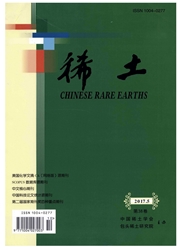

 中文摘要:
中文摘要:
采用过渡金属Cu和稀土金属Ce对TiO2进行改性。为获取高效的甲醛气体去除率,运用正交实验设计结合BP神经网络优化TiO2的改性方案。以Cu-Ce掺杂负载量、Cu-Ce摩尔比和烧结温度为正交实验设计因子,每个因子各取3个水平,以光催化甲醛气体的降解效率为目标因子,编制3因素4水平正交设计表。结合BP网络强大的函数拟合功能,以正交设计表中3因素为网络输入层,以光催化甲醛气体的降解效率为网络输出层,建立BP神经网络优化模型,并通过该模型进行预测和优选,得到最佳的活性炭改性方案。即Cu-Ce掺杂负载量为2.92%、Cu-Ce摩尔比为1∶1和烧结温度为517℃。此时光催化甲醛气体的降解效率为61.60%,与预测值59.47%的相对误差为3.46%。
 英文摘要:
英文摘要:
TiO2 was modified with transition metal Cu and rare earth metal Ce. The scheme was optimized by orthogonal design in a combination with BP neural network to get effective removal efficiency of formaldehyde gas. The three factors four levels orthogonal design table was established with Cu - Ce - doped loading, Cu - Ce molar ratio and sintering temperature as factors and removal efficiency of formaldehyde gas as the goal factor. The optimal modified scheme was found via predicting and selecting the BP network optimization model with three factors as inputs and removal efficiency of formaldehyde gas as output on the basis of the effective fitting function. Cu - Ce - doped loading was 2.92 % , Cu - Ce molar ratio was 1 : 1 and sintering temperature was 517 ℃, respectively. The removal efficiency of formaldehyde gas was 61.60 % , so the relative error of 3.46 % discrepancy compared with the model value 59.47 %.
 同期刊论文项目
同期刊论文项目
 同项目期刊论文
同项目期刊论文
 Combustion properties and thermal degradation behaviors of biobased polylactide composites filled wi
Combustion properties and thermal degradation behaviors of biobased polylactide composites filled wi 期刊信息
期刊信息
